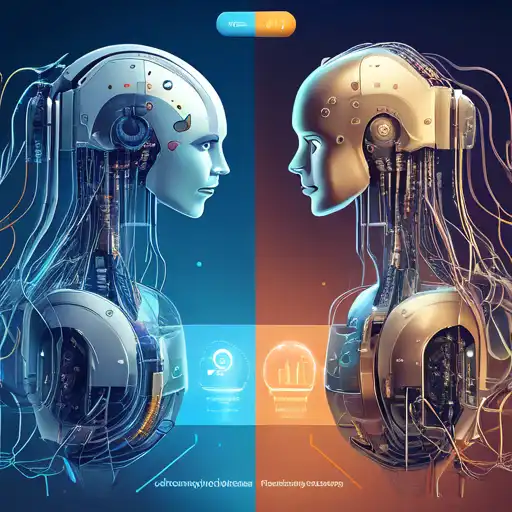Introduction to Machine Learning and Deep Learning
In the realm of artificial intelligence (AI), Machine Learning (ML) and Deep Learning (DL) are two pivotal technologies that have transformed how machines interpret data. While they share common ground, their approaches, capabilities, and applications differ significantly. This article delves into the key differences between ML and DL, offering insights into their unique characteristics and how they're applied in real-world scenarios.
What is Machine Learning?
Machine Learning is a subset of AI that enables systems to learn from data, identify patterns, and make decisions with minimal human intervention. ML algorithms are trained using structured data and can improve their accuracy over time. Applications of ML include spam detection, recommendation systems, and fraud detection.
What is Deep Learning?
Deep Learning, a more advanced subset of ML, mimics the workings of the human brain in processing data for decision making. DL uses neural networks with many layers (hence 'deep') to analyze various factors of data. It excels in handling unstructured data like images and speech. Examples of DL applications include facial recognition, autonomous vehicles, and natural language processing.
Key Differences Between Machine Learning and Deep Learning
Data Dependency
ML algorithms require structured data and often need manual feature extraction. In contrast, DL algorithms can work with unstructured data and automatically discover the representations needed for feature detection.
Hardware Requirements
DL models are computationally intensive, requiring high-performance GPUs for training. ML models, being less complex, can be trained on lower-end CPUs.
Interpretability
ML models are generally easier to interpret and debug. DL models, due to their complexity, often act as 'black boxes', making it harder to understand how decisions are made.
Use Cases
ML is widely used for predictive analytics and classification tasks. DL is preferred for complex problems like image and speech recognition, where the data is high-dimensional.
Choosing Between Machine Learning and Deep Learning
The choice between ML and DL depends on the problem at hand, the volume and type of data available, and computational resources. For tasks involving structured data and where interpretability is key, ML is the go-to. DL shines in scenarios with vast amounts of unstructured data and where the problem's complexity justifies the computational cost.
Conclusion
Understanding the differences between Machine Learning and Deep Learning is crucial for leveraging the right technology for your AI projects. While ML offers simplicity and efficiency for straightforward tasks, DL provides the power and flexibility needed for tackling more complex challenges. As AI continues to evolve, the line between ML and DL may blur, but their foundational differences will remain relevant for years to come.
